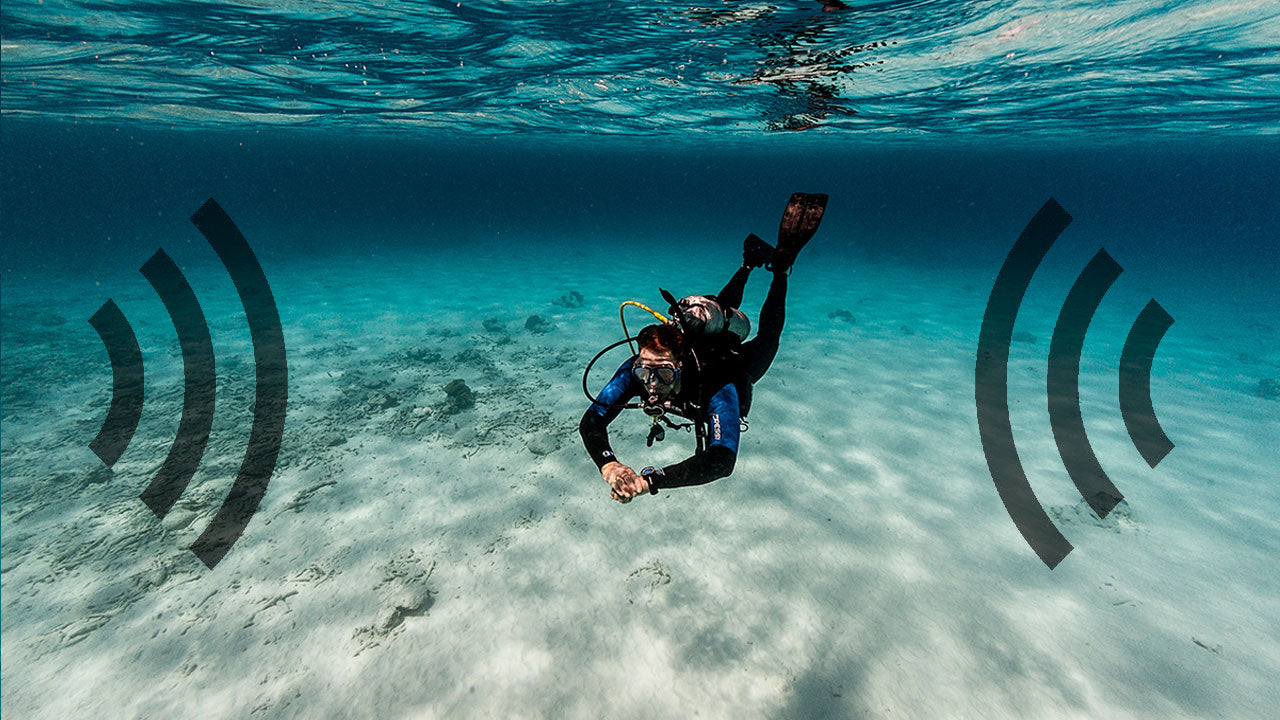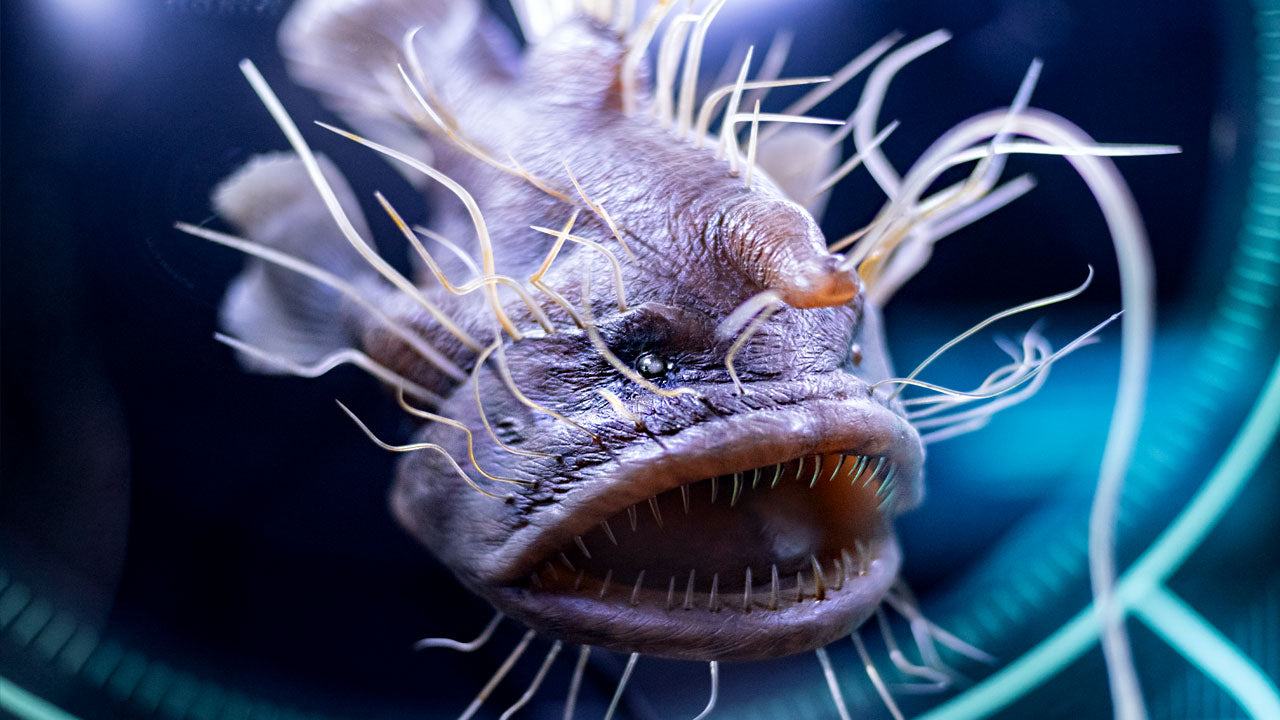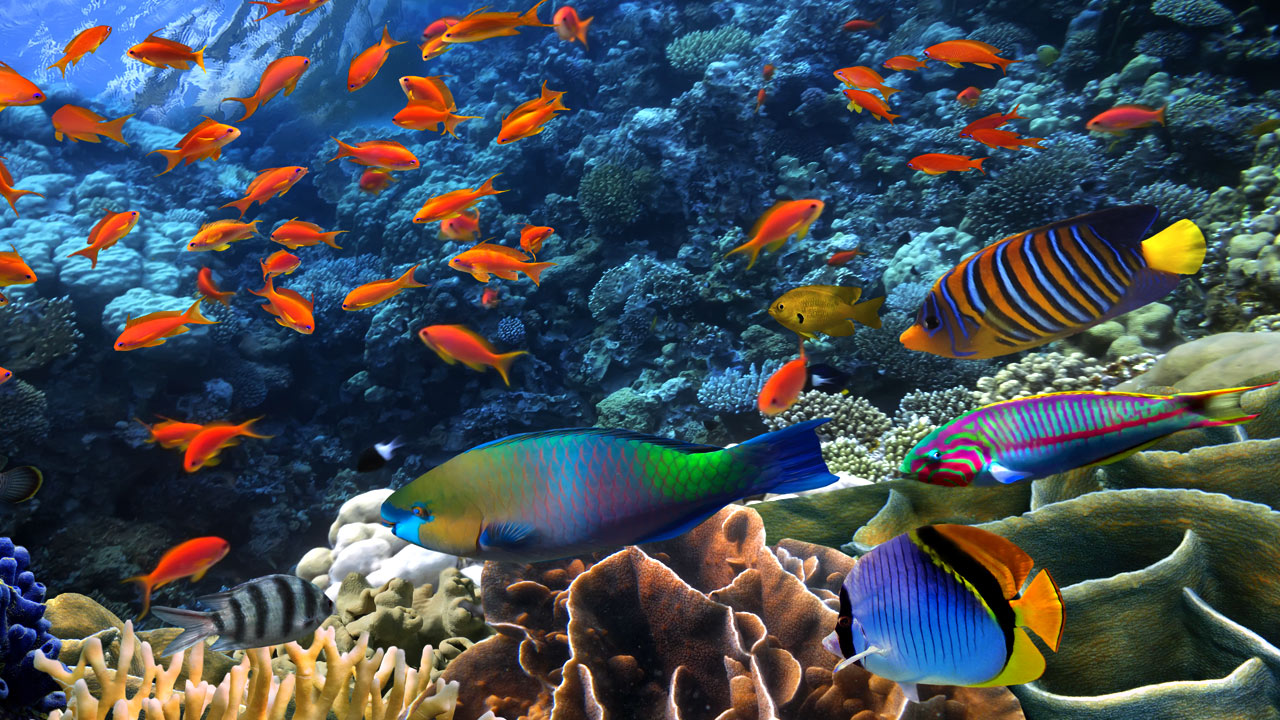10 Creepy Ocean Animals

While you’re finishing your Halloween preparations, we’ve come up with something creepy as well. Our world’s ocean is full of mystery and unexpected dwellers. Unlike all these demons and ghosts that are supposedly cracking into our dimension on the last day of October, the eerie creatures you’ll see in this article undoubtedly exist in reality. Some of them look like an absolute nightmare! As the saying goes, don’t dive too deep without a buddy, for the waters are dark and full of terrors.
Sarcastic Fringehead
The Sarcastic Fringehead is a rather small fish but with a big predator-like mouth and aggressive territorial behavior. They live off the west coast of North America. When two of these creatures meet, they have a territorial battle pressing their wide-open mouths against each other. Therefore it is sometimes referred to as the most quarrelsome fish. The Sarcastic Fringehead has needle-like teeth, which they use as a defense against any intruder who dares to step into their territory.
Northern Stargazer
The name Stargazer seemingly comes from the fact that the eyes and mouths of the fish are mounted on the top of their heads, thus making them forever gazing skyward. The reason behind this is that they camouflage themselves in the sand on the ocean floor and attack fish that is passing by. This mean way of a hunt is also aided by their venomous spines and their ability to cause electric shock. The natural habitat of this creature are the deep waters off the east coast of the United States.

Canvasman21 via Wikimedia commons
Anglerfish
The Anglerfish is a master of disguise hiding itself among the sand and rocks of the ocean floor. It allures its prey by using a bioluminescent pole-type structure that sticks out of its head and hangs right in front of its needle-like teeth. The light is produced by millions of specific glowing bacteria. In the total darkness of the deepest waters, the prey gets attracted to this light, however, the enlightenment does not last too long.
What is particularly interesting about this fish is that only the female Anglerfish have such a striking appearance. The male Anglerfish are very tiny and play their part only during mating, at which time it fuses to the female and slowly dissolves until there is nothing left but the pair of gonads to impregnate the big mama.

Masaki Miya et al., via Wikimedia Commons
Giant Isopod
These mysterious creatures are deep ocean relatives of land-dwelling woodlice or "pill bugs". They are known to grow about 50cm (19in) long. They typically inhabit depths ranging from 170 - 2140m (560 - 7020ft). They are a perfect example of Abyssal Gigantism, the tendency for deep ocean life to grow to more massive sizes than their shallow-water relatives. Although they may look intimidating, in fact, they are ecologically important due to the fact that they are scavengers and are, so to say, janitors of the ocean floor.

By Eric Kilby from Somerville, MA, USA via Wikimedia Commons
Fangtooth
The Fangtooth got their name for their long and sharp teeth. Although frightening in appearance, fangtooth do not get bigger than the average adult human hand. With the dark skin and scales, they are in the perfect position to catch prey and stay unnoticeable to bigger predators. They can be found worldwide at a depth ranging between 500 meters and 2100 meters (1650 - 7000 feet).

By Sandra Raredon/Smithsonian Institution via Wikimedia commons
Goblin Shark
The Goblin Shark is a rare four meters long deep-sea creature inhabiting the Pacific, Indian and Atlantic oceans. Its most distinctive characteristic is the really strange shape of its head. It has a long snout that looks like a horn as it seems to be on the shark's head and a very particular jaw that extends forward like e.t. Alien from a well-known movie. The shark uses the electro-sensitive organs inside its snout that sense the presence of prey in very dark water. Once the prey is found, the shark pops out its jaw and snaps the victim with its razor-sharp teeth.

Dianne Bray / Museum Victoria, via Wikimedia Commons
Grenadier
Grenadiers, also known as rattails, are among the most abundant deep ocean dwellers, making up around 15% of all deep-sea creatures. They are great predators of the deep waters, tending to live at depths of up to 3500 meters (11500 ft). Their main prey is the Vampire Squid, of which you'll read next. They can grow as long as almost 2.1m (6.9 ft). They may not look too scary, however, they stink like hell. To imagine the intensity of this stench, combine human urine, sweat, and bad breath - and voila, you got it.
Vampire Squid
Deep in the ocean in the cold darkness lurks a mysterious ancient creature - The Vampire Squid. Before you reach for your garlic and the wooden stick, there are two things you should know about this enigma of the deep: it is neither a vampire nor a squid. In fact, they are ancient ancestors of both squid and octopus, and referred to as a “living fossil”, as they have not changed much since time immemorial. They got their name for having red coloring, glowing eyes, and the cloak-like membrane between their eight arms.
Lamprey
Despite the fact that scientists consider Lamprey one of the most primitive of all vertebrate species, this blood-sucking parasite can cause some real damage. Sea lampreys have a disc-shaped mouth ringed with sharp, curved teeth, which they use to latch onto large fish and feed on its body fluids. As if that wasn't enough, they secrete an enzyme that prevents their host's blood from clotting. It naturally has negative effects on the host even after the lamprey has detached itself and left.
Blobfish
The look of this fish can make you jump out of your boat, or better to say your wetsuit. Blobfish is the most repulsive thing you can meet in the ocean. In September 2013, the Ugly Animal Preservation Society conducted a poll on "the world's ugliest animal". Guess who won? We will not be surprised if the Blobfish maintain this title for the next few decades. As a matter of fact, however, the Blobfish is not always that awful in appearance. It gets its gross look due to decompression after it’s been taken to the surface. In its natural deep sea habitat it looks pretty much like a normal fish.
In conclusion, hopefully we’ve matched your Halloween mood and got you a bit scared. If not, creepy new creatures are constantly being found in the mysterious depth of the ocean, so who knows, maybe by next year we’ll have some real underwater monstro to frighten the hell out of you.




